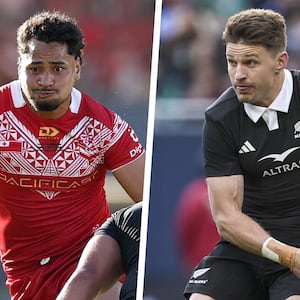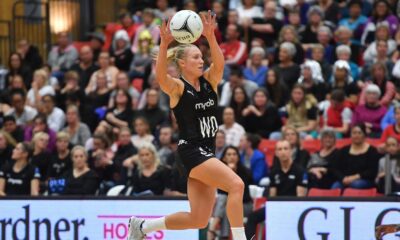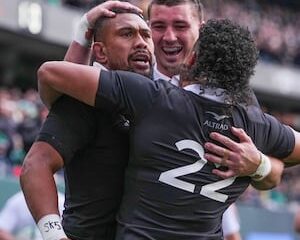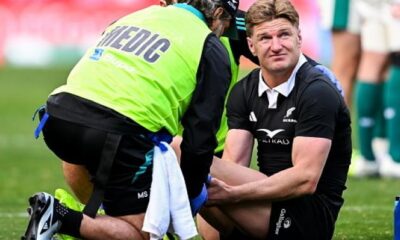Sports
All Blacks and Eli Katoa Spotlight Rugby’s Concussion Crisis

The recent head clashes involving the All Blacks and player Eli Katoa have drawn attention to the escalating concerns surrounding concussions in both rugby union and rugby league. As the sports grapple with the implications of head injuries, the NFL’s response to similar issues offers a stark comparison. The NFL has allocated $2.1 billion to pay out players suffering from concussion-related illnesses, raising important questions about how rugby codes manage player safety.
The clash between rugby union and league has intensified as both sports face increasing scrutiny over their handling of head injuries. Recent statistics show that concussions remain a significant concern, with players at risk of long-term health issues stemming from repeated impacts. The situation has prompted both codes to evaluate their protocols for player safety and the measures taken to protect athletes on the field.
Concussion Protocols Under Review
Following the incidents involving Eli Katoa, discussions have surfaced about enhancing concussion protocols within rugby. Both rugby union and league have faced criticism for their approaches, which some argue do not sufficiently prioritize player welfare. The NFL’s substantial financial commitment to addressing concussion-related injuries highlights a different standard in professional sports.
Reports indicate that rugby organizations are now under pressure to implement more rigorous testing and rehabilitation protocols. This includes the introduction of mandatory head injury assessments during matches, which aim to identify and manage concussions more effectively. The goal is to prevent players from returning to the field too soon, a concern that has been at the forefront of discussions in rugby circles.
The All Blacks, renowned for their competitive spirit, also face the challenge of balancing the physical demands of the sport with player safety. Their recent matches have sparked debates among fans and officials alike about the future of the game and how best to protect its players.
Learning from the NFL’s Approach
The NFL’s approach to concussion management has been shaped by years of litigation and growing awareness of the long-term effects of head injuries. With the league’s payout of $2.1 billion to affected players, it serves as a cautionary tale for rugby. Many advocates for player safety argue that rugby must learn from these experiences to avoid similar pitfalls.
In the face of increasing evidence linking concussions to serious health issues, rugby authorities are urged to take proactive steps. This includes collaborating with medical experts to develop best practices for injury management. The push for reform is not just about compliance; it reflects a cultural shift towards prioritizing athlete health over the traditional emphasis on toughness and resilience.
Rugby union and league have the opportunity to lead by example, demonstrating that player safety can coexist with the sport’s competitive nature. As discussions continue, the hope is that both codes will emerge with more robust frameworks to protect their athletes, ensuring that the players’ health is not compromised in the pursuit of victory.
In summary, the recent incidents involving the All Blacks and Eli Katoa serve as a crucial reminder of the ongoing challenges surrounding concussions in rugby. With the NFL’s experience in mind, rugby officials are now tasked with the responsibility of reforming their practices, ultimately safeguarding the future of the sport and its players.
-

 Sports2 months ago
Sports2 months agoNetball New Zealand Stands Down Dame Noeline Taurua for Series
-

 Entertainment2 months ago
Entertainment2 months agoTributes Pour In for Lachlan Rofe, Reality Star, Dead at 47
-

 Entertainment4 weeks ago
Entertainment4 weeks agoNew ‘Maverick’ Chaser Joins Beat the Chasers Season Finale
-

 Sports5 days ago
Sports5 days agoEli Katoa Rushed to Hospital After Sideline Incident During Match
-

 Sports2 months ago
Sports2 months agoSilver Ferns Legend Laura Langman Criticizes Team’s Attitude
-

 Politics1 month ago
Politics1 month agoNetball NZ Calls for Respect Amid Dame Taurua’s Standoff
-

 Entertainment2 months ago
Entertainment2 months agoKhloe Kardashian Embraces Innovative Stem Cell Therapy in Mexico
-

 World3 months ago
World3 months agoPolice Arrest Multiple Individuals During Funeral for Zain Taikato-Fox
-

 Sports3 months ago
Sports3 months agoGaël Monfils Set to Defend ASB Classic Title in January 2026
-

 Sports2 days ago
Sports2 days agoJamie Melham Triumphs Over Husband Ben in Melbourne Cup Victory
-

 Entertainment1 month ago
Entertainment1 month agoTyson Fury’s Daughter Venezuela Gets Engaged at Birthday Bash
-

 Sports1 month ago
Sports1 month agoHeather McMahan Steps Down as Ryder Cup Host After Controversy



















